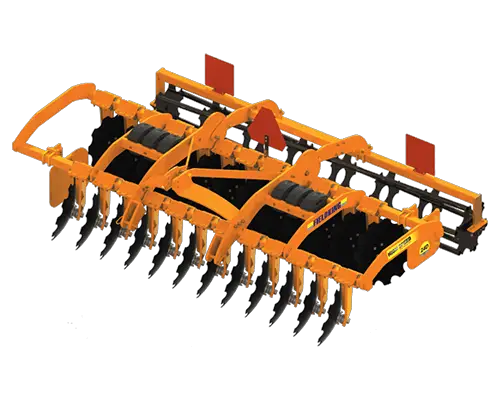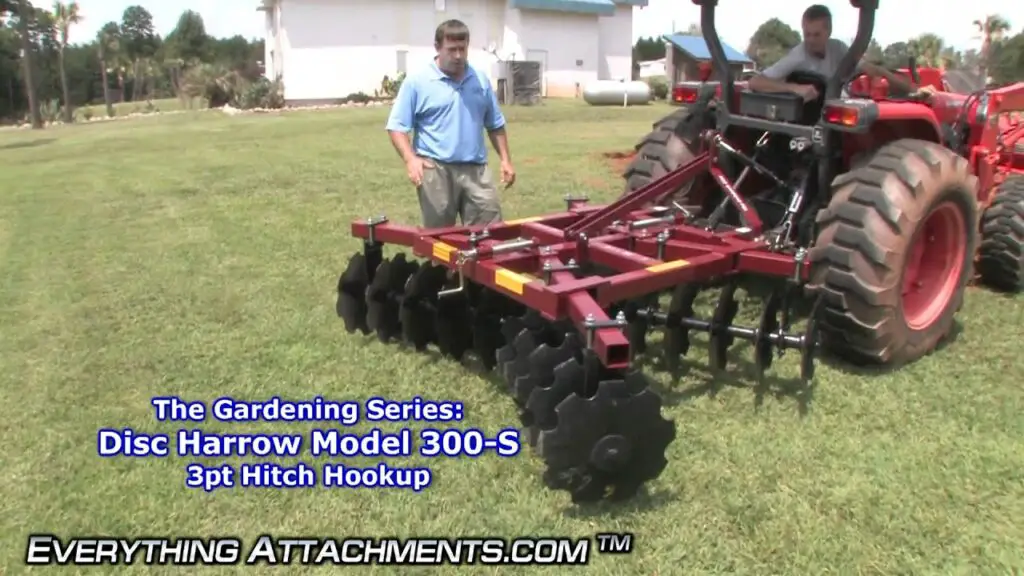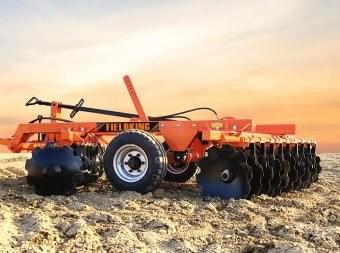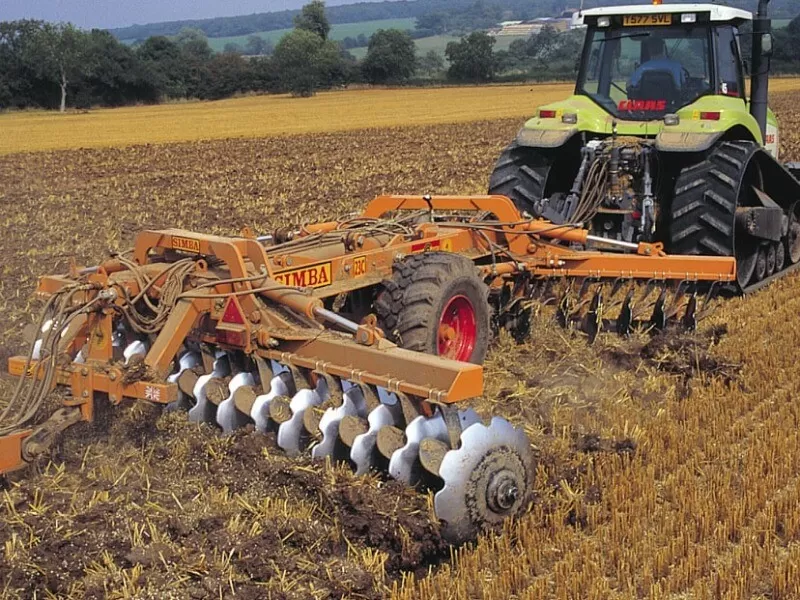This post may contain affiliate links which means I may receive a commission for purchases made through links. Learn more on my Private Policy page.
Are you looking for the most effective way to use a disc harrow? Well, look no further! In this article, we will explore the best practices for utilizing a disc harrow in your farming or gardening endeavors. Whether you’re a seasoned farmer or just starting out with your own plot of land, these tips and techniques will help you achieve optimal results with this versatile piece of equipment. So, let’s get started and discover the key strategies for harnessing the full potential of a disc harrow!

This image is property of i.ytimg.com.
Choosing the Right Disc Harrow
When it comes to choosing the right disc harrow for your needs, there are a few factors to consider. First, think about the size and horsepower of your tractor. The disc harrow you select should be compatible with the capabilities of your tractor. Make sure to check the manufacturer’s recommendations for the horsepower and size requirements.
Next, assess the ground conditions in the area where you will be using the disc harrow. Take note of the soil type, moisture levels, and any other factors that may affect the performance of the disc harrow. This will help you determine the type of disc harrow that will be most suitable for your needs.
Lastly, evaluate the specific tasks and requirements you have for the disc harrow. Different disc harrows have different features and capabilities. Consider whether you need a disc harrow for primary tillage, secondary tillage, or seedbed preparation. Additionally, think about any additional features or attachments that may be required for your specific needs. By taking these factors into consideration, you can choose the right disc harrow that will meet your needs and provide optimal results.
Preparing the Ground
Before you start using the disc harrow, it’s important to properly prepare the ground. This will help ensure the best possible results and prevent any damage to the equipment.
One of the first steps in preparing the ground is to remove any large obstacles or debris from the field. This includes rocks, branches, or any other items that may interfere with the operation of the disc harrow. By clearing the field of these obstacles, you can help prevent damage to the equipment and achieve a more thorough and effective tillage.
Additionally, it is essential to ensure that the soil is dry enough for discing. Using a disc harrow on wet or overly moist soil can lead to clumping and uneven results. Before beginning, make sure the soil has had sufficient time to dry out, especially after rain or irrigation.
If necessary, level the ground before operating the disc harrow. Uneven or bumpy terrain can affect the performance of the equipment and lead to uneven soil preparation. Use a leveling implement or a drag harrow to smooth out the ground and create a more even surface. This will help ensure that the disc harrow can operate effectively and achieve the desired results.
Setting Up the Disc Harrow
Once the ground is adequately prepared, it’s time to set up the disc harrow. Proper setup is essential for optimal performance and to prevent any unnecessary wear or damage to the equipment.
Before starting, inspect the discs for any signs of damage or wear. Look for cracks, chips, or any other indications that the discs may need to be replaced. Damaged discs can affect the operation of the disc harrow and lead to poor results. By regularly inspecting and replacing worn-out discs, you can ensure that the equipment functions properly and provides the desired tillage results.
Next, adjust the disc angle and depth according to the specific requirements of your job. The disc angle affects the aggressiveness of the tillage, while the depth determines how deeply the discs penetrate the soil. It’s important to find the right balance to achieve the desired results without causing unnecessary stress to the equipment.
Proper lubrication is also crucial for the smooth operation of the disc harrow. Before use, make sure to lubricate all moving parts, including bearings and axles. This will help reduce friction, prevent premature wear, and ensure that the equipment operates efficiently. Consult the manufacturer’s instructions for the recommended lubrication points and intervals.
Operating the Disc Harrow
Operating the disc harrow correctly is essential for achieving the best results and prolonging the lifespan of the equipment. Here are some key considerations to keep in mind while using the disc harrow.
First, drive at an appropriate speed. Going too fast can lead to inefficient tillage, while going too slow may cause the disc harrow to dig too deeply into the soil. Find a balance that allows the equipment to operate smoothly and produce the desired results.
Avoid excessive overlap when making passes with the disc harrow. Overlapping too much can result in unnecessary stress on the equipment and may also lead to uneven tillage. Aim for a slight overlap to ensure complete coverage without causing unnecessary wear or strain on the disc harrow.
Keeping the tractor in a straight line is crucial for achieving even and consistent tillage. Any deviation from a straight line can result in uneven soil preparation, which may require additional passes to achieve the desired results. Pay attention to your steering and make adjustments as needed to maintain a straight path.

This image is property of farmimplement.files.wordpress.com.
Dealing with Field Limitations
When using a disc harrow, you may encounter various field limitations that require specific attention and adjustments. Here are some common field limitations and how to handle them:
If you’re working on hilly terrain, it’s important to adapt your approach to prevent any safety hazards or damage to the disc harrow. Always operate the equipment at a safe speed, keeping in mind the slope and stability of the ground. Consider adjusting the disc angle and depth to ensure proper tillage on slopes.
Rocky or uneven soil can pose challenges when using a disc harrow. Take extra care to avoid running the discs over large rocks or obstacles, as this can cause damage to the equipment. If the soil is extremely rocky, it may be necessary to use a different tillage method or remove the rocks before discing.
Wet or muddy conditions can affect the performance of the disc harrow. In these situations, it’s important to exercise caution and make any necessary adjustments. If the soil is too wet, it may be best to postpone discing until it has dried out. Alternatively, consider using a lighter disc harrow or adjusting the disc angle to prevent excessive soil compaction.
Routine Maintenance and Care
To ensure the longevity and optimal performance of your disc harrow, routine maintenance and care are essential. By following these steps, you can keep your equipment in top shape:
After each use, take the time to clean the disc harrow thoroughly. Remove any soil, debris, or plant matter that has accumulated on the equipment. Pay special attention to the areas around the discs and bearings. Cleaning the disc harrow helps prevent corrosion, reduces the risk of damage, and ensures that the equipment functions properly during its next use.
Regularly check and replace any worn-out or damaged parts on the disc harrow. This includes discs, bearings, bolts, and other components. Worn-out parts can affect the performance of the equipment and may lead to subpar tillage results. By regularly inspecting and replacing these parts, you can ensure that the disc harrow operates efficiently and effectively.
When not in use, store the disc harrow properly to protect it from the elements and prevent damage. Ideally, store the equipment in a dry and sheltered location, such as a barn or shed. Cover the disc harrow to protect it from dust, moisture, and sunlight. Proper storage helps prolong the lifespan of the equipment and ensures that it is ready for use when needed.

This image is property of i.ytimg.com.
Safety Measures
Using a disc harrow involves potential risks, so it’s important to prioritize safety. Follow these safety measures to protect yourself, others, and the equipment:
Always wear appropriate protective gear when operating the disc harrow. This includes gloves, safety glasses, and sturdy footwear. Protective gear helps prevent injuries from flying debris and reduces the risk of accidents.
Keep bystanders and other individuals at a safe distance while operating the disc harrow. The equipment can throw debris and may pose a hazard to those in close proximity. It’s important to establish a safety zone around the working area and ensure that everyone stays outside of it.
Lastly, follow the manufacturer’s instructions for the safe use and operation of the disc harrow. The manufacturer provides important guidelines and recommendations to ensure safe and efficient operation. Familiarize yourself with these instructions and adhere to them at all times.
Monitoring and Adjusting Performance
Regularly monitoring the performance of your disc harrow is important to ensure optimal results. Pay attention to the quality of tillage, fuel efficiency, and any signs of equipment wear or damage. If you notice any issues or inconsistencies, adjustments may be necessary.
For example, if the tillage is not achieving the desired results, you may need to adjust the disc angle or depth. Experiment with different settings to find the optimal configuration for your specific soil and conditions.
Additionally, keeping track of fuel and maintenance costs can provide valuable insights into the performance and efficiency of your disc harrow. By monitoring these costs, you can identify any areas where improvements can be made, such as reducing fuel consumption or optimizing maintenance schedules.

This image is property of custom-images.strikinglycdn.com.
Enhancing Efficiency
To enhance the efficiency of your disc harrow, consider implementing the following practices:
GPS technology can be a valuable tool for precise and efficient tillage. By using GPS guidance systems, you can ensure accurate and consistent passes, reduce overlap, and minimize fuel consumption. This technology can also help you maintain straighter lines and make adjustments as needed.
Utilize disc harrow attachments and accessories that are specifically designed to improve efficiency and productivity. These may include depth control wheels, rolling baskets, or seeding attachments. These accessories can help optimize tillage results and reduce the need for additional equipment or passes.
Implement crop rotation and cover cropping as part of your overall farming practices. These techniques can help improve soil health, manage weeds, and reduce erosion. By maintaining healthy soil and reducing the need for excessive tillage, you can enhance the efficiency and sustainability of your tillage operations.
Common Mistakes to Avoid
To get the most out of your disc harrow, it’s important to avoid some common mistakes that can hinder performance and decrease efficiency. Here are a few mistakes to watch out for:
Skipping soil preparation before using the disc harrow can lead to poor results. Properly preparing the ground by removing obstacles, ensuring proper soil moisture, and leveling the ground sets the stage for effective tillage. Skipping these steps can result in uneven or inadequate soil preparation.
Neglecting regular maintenance can lead to decreased performance and premature wear of the equipment. Regularly inspecting and maintaining your disc harrow is essential to keep it functioning optimally. Keep a maintenance schedule and follow it diligently to prevent any issues or breakdowns.
Using incorrect disc harrow settings can affect the quality of tillage and lead to wasted time and resources. Take the time to properly set the disc harrow angle, depth, and speed for the specific conditions and requirements of each job. Adjusting these settings as needed will help you achieve the best results with your disc harrow.
By following these best practices and avoiding common mistakes, you can make the most out of your disc harrow and ensure optimal results. Remember to prioritize safety, perform routine maintenance, and adjust your practices as needed to achieve efficient and effective soil preparation.

This image is property of amtec-group.com.
This post may contain affiliate links which means I may receive a commission for purchases made through links. Learn more on my Private Policy page.

